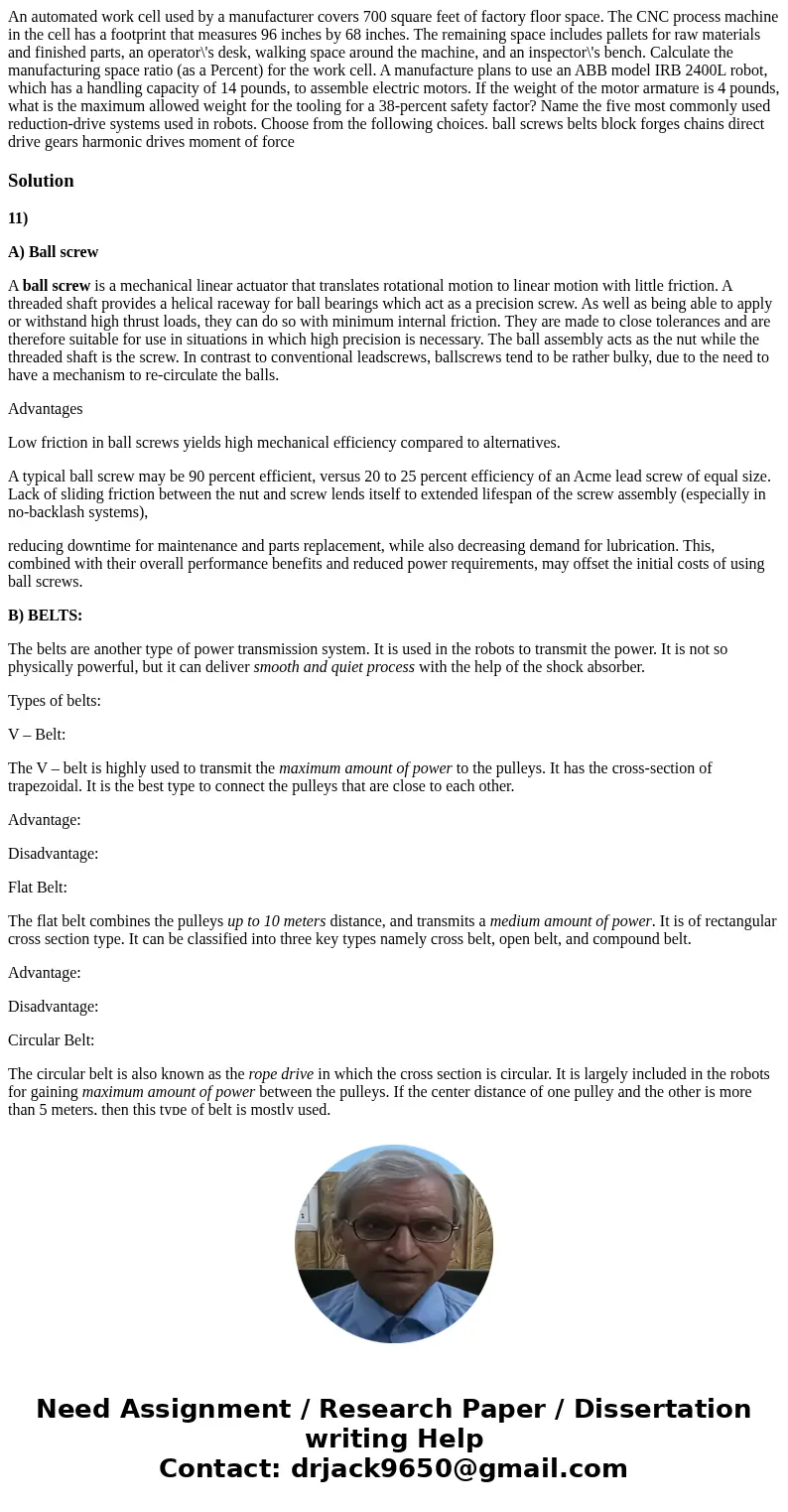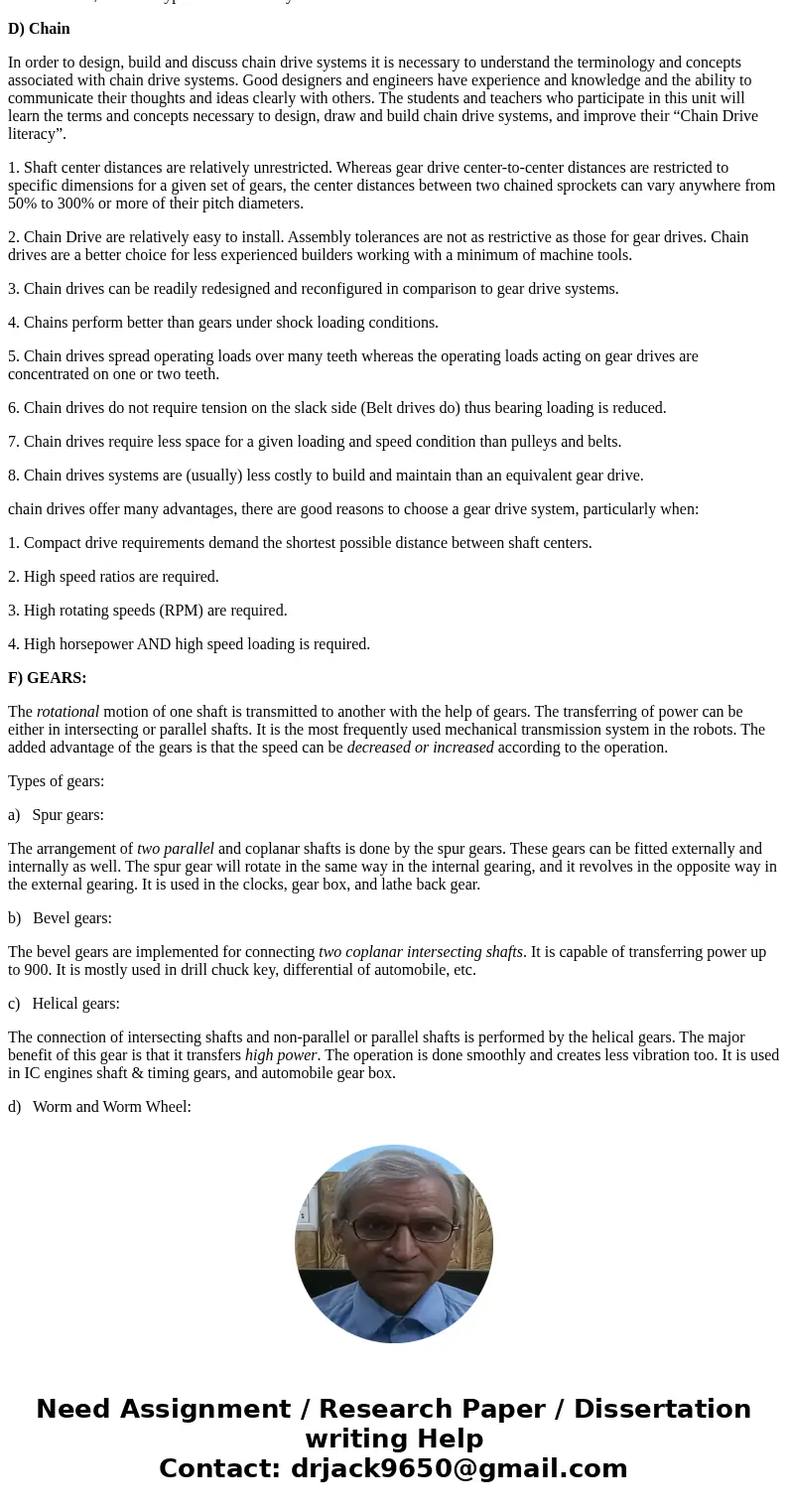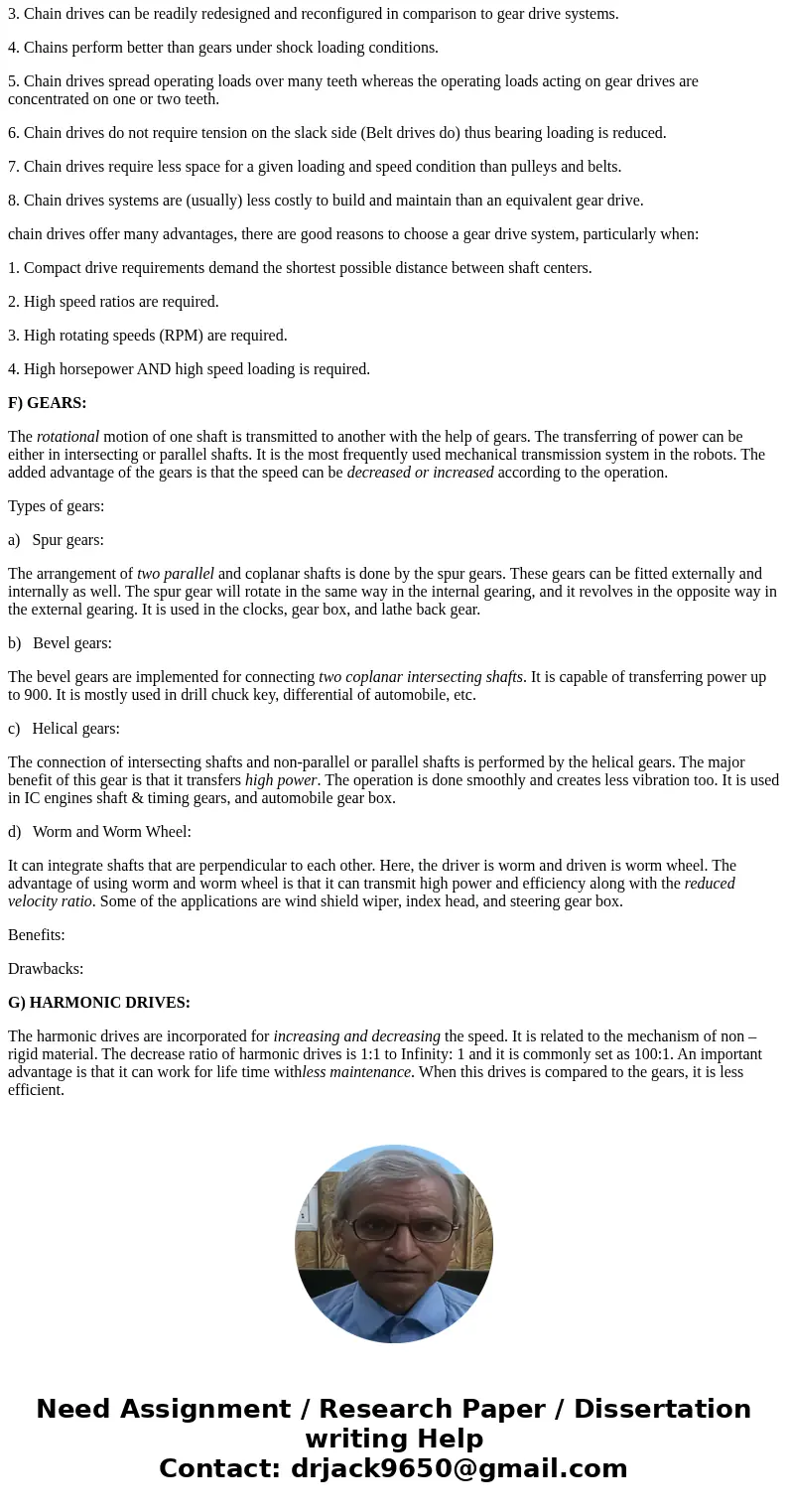An automated work cell used by a manufacturer covers 700 squ
Solution
11)
A) Ball screw
A ball screw is a mechanical linear actuator that translates rotational motion to linear motion with little friction. A threaded shaft provides a helical raceway for ball bearings which act as a precision screw. As well as being able to apply or withstand high thrust loads, they can do so with minimum internal friction. They are made to close tolerances and are therefore suitable for use in situations in which high precision is necessary. The ball assembly acts as the nut while the threaded shaft is the screw. In contrast to conventional leadscrews, ballscrews tend to be rather bulky, due to the need to have a mechanism to re-circulate the balls.
Advantages
Low friction in ball screws yields high mechanical efficiency compared to alternatives.
A typical ball screw may be 90 percent efficient, versus 20 to 25 percent efficiency of an Acme lead screw of equal size. Lack of sliding friction between the nut and screw lends itself to extended lifespan of the screw assembly (especially in no-backlash systems),
reducing downtime for maintenance and parts replacement, while also decreasing demand for lubrication. This, combined with their overall performance benefits and reduced power requirements, may offset the initial costs of using ball screws.
B) BELTS:
The belts are another type of power transmission system. It is used in the robots to transmit the power. It is not so physically powerful, but it can deliver smooth and quiet process with the help of the shock absorber.
Types of belts:
V – Belt:
The V – belt is highly used to transmit the maximum amount of power to the pulleys. It has the cross-section of trapezoidal. It is the best type to connect the pulleys that are close to each other.
Advantage:
Disadvantage:
Flat Belt:
The flat belt combines the pulleys up to 10 meters distance, and transmits a medium amount of power. It is of rectangular cross section type. It can be classified into three key types namely cross belt, open belt, and compound belt.
Advantage:
Disadvantage:
Circular Belt:
The circular belt is also known as the rope drive in which the cross section is circular. It is largely included in the robots for gaining maximum amount of power between the pulleys. If the center distance of one pulley and the other is more than 5 meters, then this type of belt is mostly used.
D) Chain
In order to design, build and discuss chain drive systems it is necessary to understand the terminology and concepts associated with chain drive systems. Good designers and engineers have experience and knowledge and the ability to communicate their thoughts and ideas clearly with others. The students and teachers who participate in this unit will learn the terms and concepts necessary to design, draw and build chain drive systems, and improve their “Chain Drive literacy”.
1. Shaft center distances are relatively unrestricted. Whereas gear drive center-to-center distances are restricted to specific dimensions for a given set of gears, the center distances between two chained sprockets can vary anywhere from 50% to 300% or more of their pitch diameters.
2. Chain Drive are relatively easy to install. Assembly tolerances are not as restrictive as those for gear drives. Chain drives are a better choice for less experienced builders working with a minimum of machine tools.
3. Chain drives can be readily redesigned and reconfigured in comparison to gear drive systems.
4. Chains perform better than gears under shock loading conditions.
5. Chain drives spread operating loads over many teeth whereas the operating loads acting on gear drives are concentrated on one or two teeth.
6. Chain drives do not require tension on the slack side (Belt drives do) thus bearing loading is reduced.
7. Chain drives require less space for a given loading and speed condition than pulleys and belts.
8. Chain drives systems are (usually) less costly to build and maintain than an equivalent gear drive.
chain drives offer many advantages, there are good reasons to choose a gear drive system, particularly when:
1. Compact drive requirements demand the shortest possible distance between shaft centers.
2. High speed ratios are required.
3. High rotating speeds (RPM) are required.
4. High horsepower AND high speed loading is required.
F) GEARS:
The rotational motion of one shaft is transmitted to another with the help of gears. The transferring of power can be either in intersecting or parallel shafts. It is the most frequently used mechanical transmission system in the robots. The added advantage of the gears is that the speed can be decreased or increased according to the operation.
Types of gears:
a) Spur gears:
The arrangement of two parallel and coplanar shafts is done by the spur gears. These gears can be fitted externally and internally as well. The spur gear will rotate in the same way in the internal gearing, and it revolves in the opposite way in the external gearing. It is used in the clocks, gear box, and lathe back gear.
b) Bevel gears:
The bevel gears are implemented for connecting two coplanar intersecting shafts. It is capable of transferring power up to 900. It is mostly used in drill chuck key, differential of automobile, etc.
c) Helical gears:
The connection of intersecting shafts and non-parallel or parallel shafts is performed by the helical gears. The major benefit of this gear is that it transfers high power. The operation is done smoothly and creates less vibration too. It is used in IC engines shaft & timing gears, and automobile gear box.
d) Worm and Worm Wheel:
It can integrate shafts that are perpendicular to each other. Here, the driver is worm and driven is worm wheel. The advantage of using worm and worm wheel is that it can transmit high power and efficiency along with the reduced velocity ratio. Some of the applications are wind shield wiper, index head, and steering gear box.
Benefits:
Drawbacks:
G) HARMONIC DRIVES:
The harmonic drives are incorporated for increasing and decreasing the speed. It is related to the mechanism of non – rigid material. The decrease ratio of harmonic drives is 1:1 to Infinity: 1 and it is commonly set as 100:1. An important advantage is that it can work for life time withless maintenance. When this drives is compared to the gears, it is less efficient.



 Homework Sourse
Homework Sourse